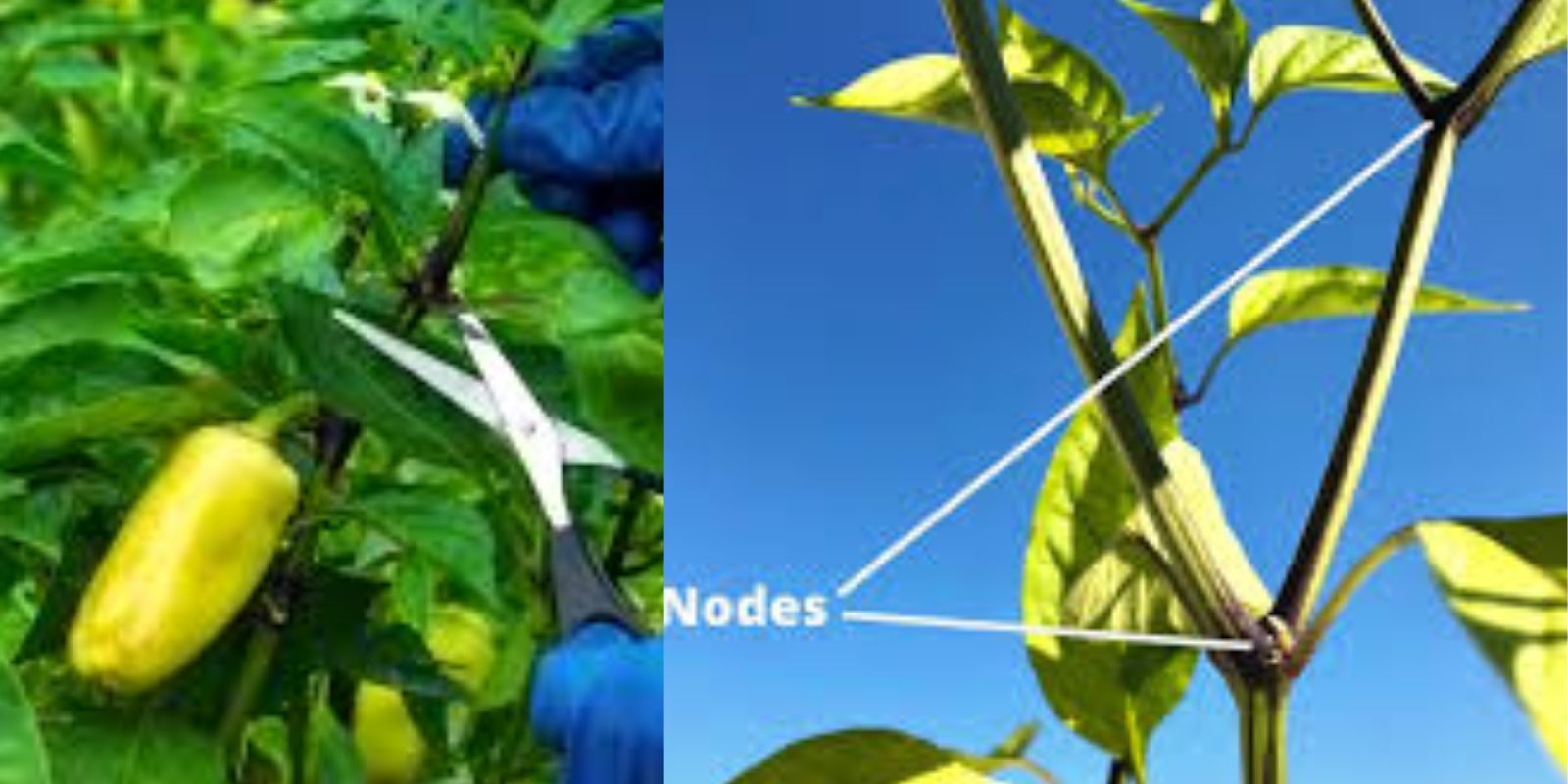Introduction
Pruning your pepper plants is one of the best ways to encourage vigorous growth, increase fruit production, and prevent diseases. Many gardeners hesitate to prune, fearing it might stunt their plants. However, when done correctly, pruning helps your peppers develop strong stems, better airflow, and an overall healthier structure. In this guide, we will walk you through the best pruning techniques for pepper plants, when to prune, and how to do it effectively.
Why Pruning Is Important for Pepper Plants
Pruning is not just about cutting away parts of the plant—it’s about directing energy where it’s needed most. Here’s why pruning is beneficial for your pepper plants:
- Encourages Bushier Growth: Removing unnecessary stems promotes lateral branching, leading to a fuller plant with more fruiting sites.
- Improves Air Circulation: Good airflow helps prevent fungal diseases, such as powdery mildew and blight.
- Strengthens the Plant Structure: A well-pruned plant can better support heavy fruit without breaking.
- Boosts Fruit Production: Pruning redirects energy from unnecessary foliage to fruit development, resulting in larger, healthier peppers.
- Prevents Disease: Removing damaged or diseased leaves early can stop infections from spreading.
When to Prune Pepper Plants
Timing is crucial when pruning your pepper plants. Here’s a breakdown of the best times to prune:
- Early Growth Stage (6-8 inches tall): This is when you should start pruning to encourage strong root and stem development.
- Mid-Season Maintenance (Before Flowering): Prune lightly to remove weak stems and improve airflow.
- After Heavy Fruiting: Once the plant starts setting fruit, avoid aggressive pruning but remove any damaged or diseased parts.
- Late Season (Near the End of the Growing Season): Trim back unnecessary foliage to focus the plant’s energy on ripening existing peppers.
Step-by-Step Guide to Pruning Pepper Plants
1. Start Early and Remove Lower Leaves
When your pepper plant reaches about 6 inches tall, start by removing the lower leaves near the soil. These leaves are more prone to disease and don’t contribute much to growth. Use clean, sharp pruning shears to make precise cuts.
2. Pinch Off Early Flowers
It might be tempting to let your pepper plant produce fruit early, but pinching off the first few flowers encourages the plant to develop stronger roots and stems. This results in a higher yield later in the season.
3. Trim Weak or Damaged Stems
Look for stems that appear weak, yellowing, or damaged. Removing these will help the plant redirect nutrients to healthier parts, leading to more robust growth.
4. Encourage Lateral Growth by Topping the Plant
When the plant reaches about 8-12 inches in height, you can “top” it by cutting the central growing tip. This will stimulate the plant to produce more side branches, making it bushier and capable of bearing more fruit.
5. Remove Suckers for Better Airflow
Suckers are the small shoots that grow in the leaf axils (where branches meet the main stem). Removing these prevents overcrowding and allows for better air circulation, reducing the risk of fungal infections.
6. Keep an Eye on Growth and Maintain Regular Pruning
Throughout the growing season, periodically remove excess growth that shades the developing fruit. If you notice any diseased leaves or stems, prune them immediately to prevent spread.
7. Reduce Pruning Once Flowering Begins
Once your pepper plant starts flowering and setting fruit, avoid heavy pruning. At this stage, you only need to remove dead or diseased foliage. Let the plant focus on producing peppers instead of regrowing lost foliage.
Tools Needed for Pruning Pepper Plants
To properly prune your pepper plants, you will need:
- Sharp pruning shears or scissors – Clean cuts prevent damage and disease.
- Gloves – Protect your hands from plant sap and potential irritants.
- Disinfectant (like rubbing alcohol or hydrogen peroxide) – Use to clean your pruning tools between cuts, especially when dealing with diseased plants.
- Compost bin – Dispose of removed plant material properly, or add healthy trimmings to your compost pile.
Common Mistakes to Avoid When Pruning Pepper Plants
- Over-pruning: Removing too many leaves and stems at once can stress the plant and slow growth.
- Pruning too late in the season: Avoid heavy pruning when the plant is heavily fruiting, as it can reduce your overall yield.
- Using dull or dirty tools: Always use clean, sharp tools to prevent infections.
- Neglecting airflow: If plants become too dense, airflow is restricted, leading to potential disease issues.
- Removing too many healthy leaves: Leaves play a crucial role in photosynthesis; removing too many can weaken the plant.
Final Tips for Healthy, Productive Pepper Plants
- Provide Proper Support: Some varieties, especially heavy producers, may need staking or cages to support their weight.
- Use Mulch: Mulching helps retain moisture and suppress weeds, keeping your plants healthier.
- Fertilize Regularly: A balanced fertilizer will support strong growth and high yields.
- Monitor for Pests: Keep an eye out for common pepper pests like aphids and caterpillars and address them promptly.
Conclusion
Pruning your pepper plants is a simple yet effective way to enhance their growth, improve yield, and prevent diseases. By following these steps, you’ll have strong, healthy plants that produce an abundance of peppers throughout the season.
🌱 Do you prune your pepper plants? Share your experiences and tips in the comments below!
#GardeningTips #GrowYourOwnFood #PepperPlants #OrganicGardening #GreenThumb

